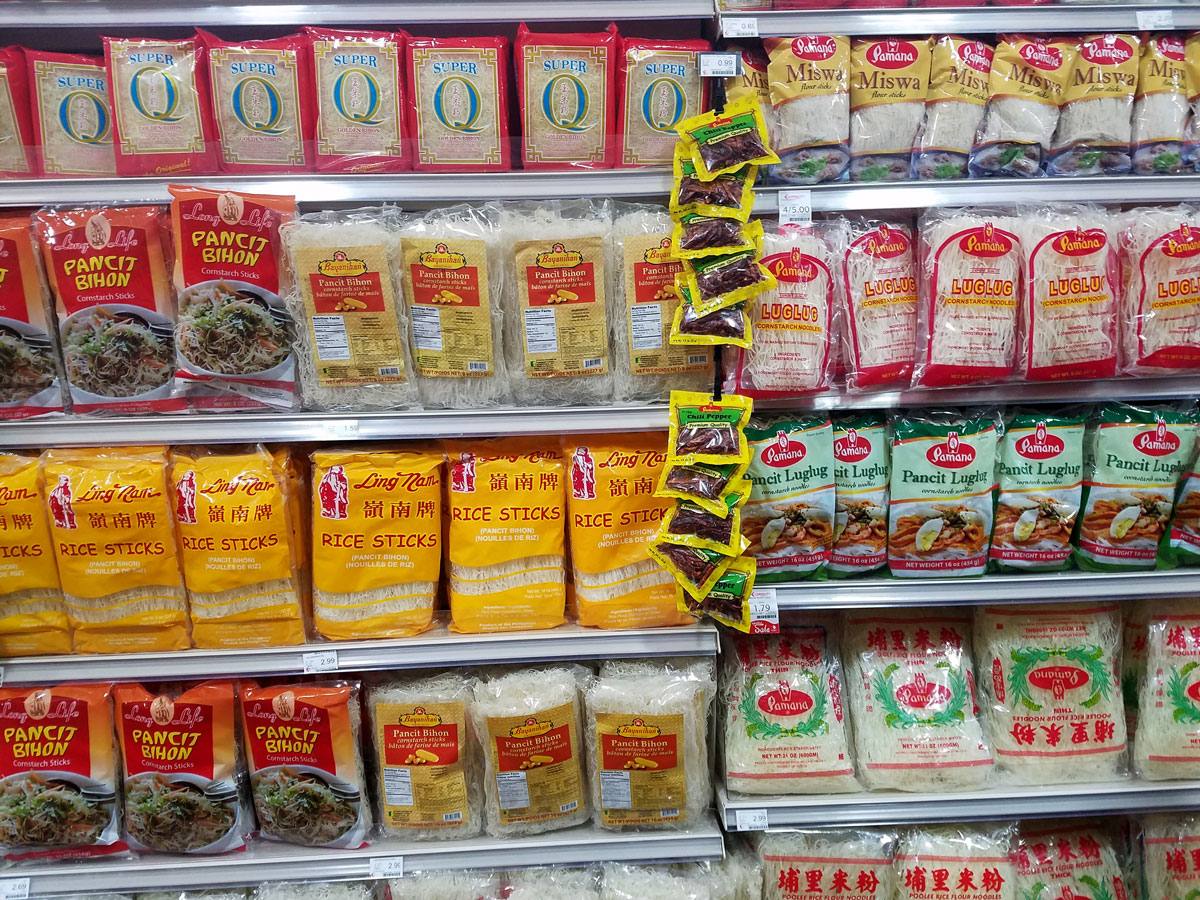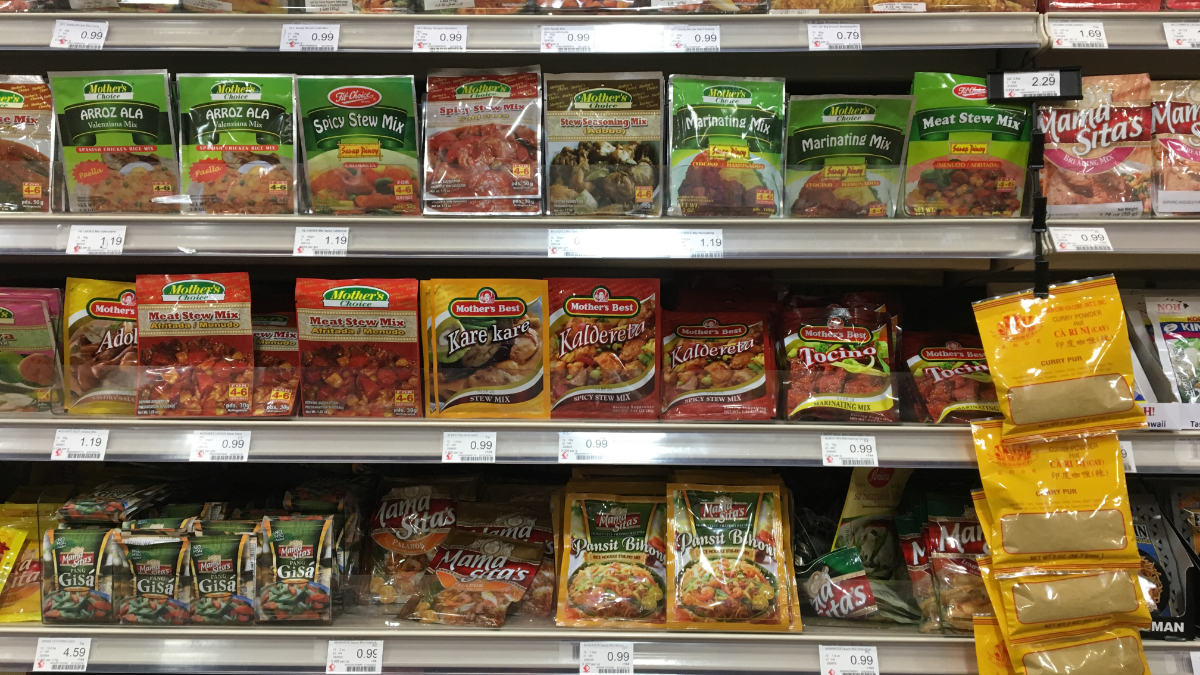Malunggay, Jackfruit, Cheese Ice Cream: The Chicago Guide To Filipino Groceries
Description
<style>
.offset{
background-color: #aed6d8;
border-color: #607D8B;
}
.article_copy .offset .inline_image {
max-width:200px;
margin:auto;
}
</style>
Cruising the aisles of a Filipino grocery store offers a history lesson in the colonizers, traders, and neighbors who passed through different parts of the Philippines over the centuries.
But sorting through the influence of Americans, Chinese, and Spanish on more than 7,000 islands can easily confuse a newbie shopper. Luckily, Worldview had Filipino Kitchen co-founders Sarahlynn Pablo and Natalia Roxas as guides on a recent journey to Seafood City, Chicago’s biggest Filipino grocery.
The two writers and cooks said smaller mom-and-pop stores (sometimes called sari saris) had served Chicago’s 100,000 Filipinos well for decades, but the community’s grocery landscape changed forever with the arrival of this enormous store in 2016.
“The sari saris are so important in our community, but the bigness of (Seafood City) is so impactful,” Pablo said. “It almost acts like an ad hoc community center.”

This story is a part of the Worldview-Chicago Sun-Times “Hungry For Home” series, which helps newbies navigate the many international groceries in the Chicago area. Find out how to cook the Filipino dish pancit guisado and the seafood soup sinigang at the Chicago Sun-Times.
With four restaurants, two bakeries, weekend street food-style vendors, and an enormous grocery store, this complex can be overwhelming to even a well-versed foodie. Shoppers are greeted by mounds of tropical produce, shelves of fermented fish and shrimp products, aisles of vinegar, oodles of Filipino noodles, special brands of processed cheese, spice packets, purple yam baked goods, and more.
Really understanding this place could take months, but for a beginner’s shortcut, we asked Pablo and Roxas to suggest ingredients to buy (and some dishes to try from the bakeries and food courts in the building.) We also threw in a few favorites of our own.
Vegetable packages: Shrink wrapped packages of assorted vegetables for dishes like pinakbet, a vegetable dish seasoned with bagoong (fermented shrimp paste), or sinigang, a Filipino sour soup flavored with tamarind or guava.
“(With these packets) the shopper would only need some condiments in order to complete the dish. Contrary to popular belief, Filipino cuisine is very vegetable and fruit centric,” Pablo said. “If your market offers these, just choose the package that looks the freshest; if none look satisfactory, pick the items yourself.”
Malunggay: Known as moringa in English, these teardrop-shaped leaves were recently designated a "superfood" by nutritionists.
“It’s nice to see our grandmothers’ wisdom confirmed by modern science,” Pablo said. “It’s a common ingredient in soups and made into tea. I’ve even had it applied to skin abrasions and inflammations with a bandage. This can be found fresh or frozen.”
Noodles: The Philippines has tons of noodle dishes, called pancit, in varieties that include luglug, miswa, bihon, and canton.
“Pancit dishes are typically served for birthdays to signify long life, and are common party food,” Pablo said. “Pancit canton or bihon seem to be the most well-known outside of Filipino communities, but luglug (seafood based) and miswa (noodle soup) are also very good. Typically, the dishes will vary by the type of noodle required ... and the sauces, broth, and/or other ingredients required. Select one according to the dish you will make. Most Filipinos have an opinion as to the brand — we’re very brand loyal.”
Bangus (milkfish): A boney, silvery catch considered the Filipino national fish.
“Bangus, or milkfish, is a very commonly available fish, either fresh, fresh from frozen, smoked ... (Most Filipino grocery stores) will clean and cut the fish to order and even deep fry it for you. No clean up,” Pablo said.
Jackfruit: A huge, versatile, tropical fruit.
“The green, unripe fruits are a perfect meat substitute in dishes like adobo, bistek, kare-kare, and more. And the yellow, ripened fruit are very tasty on their own — a little like pineapple. You can use them in a host of Filipino desserts, like turon and halo halo. You can find either version canned in Filipino grocery stores and sometimes fresh.”
Vinegar: From palm and cane vinegars to coconut and wine vinegars, this is a Filipino staple for dipping and cooking.
“It’s used in the national dish (adobo), and more importantly, most every Filipino dish can be modified slightly to one’s individual palate with a dunk into sawsawan, a general term for dipping sauce,” Pablo said. “There are tons of vinegars to choose from: sweeter ones (cane vinegar) to spicy ones (with Thai chilis).”
Packets: Spice packets that give you a head start on traditional Filipino dishes.
“These might be a little controversial, but many working Filipinos use packets to give their second-generation kids a taste of the homeland that is quick, convenient, and delicious,” Pablo said. “Others rail against packets for their low nutritional value, high sodium content, industrialized food, and inauthenticity -- whatever that means.”
Bagoong: A fermented seafood paste.
“Bagoong is the best! It’s a key ingredient and condiment made from various types of seafood. … This is an ingredient that definitely brings the funk.” (You can mix it into a hot bowl of rice or on slices of green mango. Here’s Sarahlynn’s recipe for Bagoong.
Patis: A liquid made from fermented fish.
“While Filipinos in the diaspora here in the U.S. have become accustomed to pork-based Filipino dishes, fish is really the main source of protein,” Pablo said. “This is another must-have condiment for anyone cooking Filipino food. It can be used as a substitute for salt or to give an extra bump














